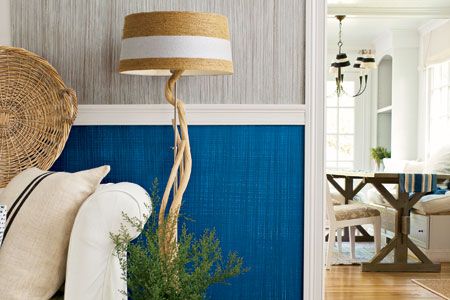Creating a faux fabric effect with paint is a simple way to add texture and visual interest to your walls. This technique, known as dragging or strie, involves pulling a dry brush through wet glaze to create a fabric-like appearance. This method can turn plain walls into a denim-inspired look or a linen-like finish. In this article, we’ll guide you through getting a faux fabric paint effect.
Faux Fabric Effect Project Details
The key to success with dragging or strie is working quickly and having a clear vision. This often means working with someone so one person rolls on the glaze while another does the dragging.
The contrast between the base coat and glaze colors plays a big role in determining the final effect. Colors with similar intensities can create a more subtle look while contrasting colors will result in a more pronounced pattern. To make the dragging process easier, divide the wall into sections, especially when working from top to bottom.
Tools and Materials
- Paint roller
- Stir sticks
- Paint tray and liners
- Angled paintbrush (3-inch)
- Stiff bristle brush (4-inch)
- Rags
- Base coat paint
- Glaze
- Tinted latex paint for glaze mixture
- Painter’s tape
- Drop cloths
- Ladder or step stool
- Plumb bobs (optional)
Paint Preparation
Before beginning the faux fabric painting process, start by clearing the room of furniture and covering the floor with drop cloths. Use painter’s tape to protect baseboards, window frames, and other areas you don’t want to paint.
Make sure that your walls are clean, dry, and free of any holes or imperfections. Fill any holes or cracks with spackle and sand smooth once dry. Apply a primer if necessary, especially if you’re making a significant color change or working on new drywall. This step allows the base coat to adhere correctly and provides a smooth canvas for the faux finish.
Applying the Base Coat
The base coat is the foundation for your faux fabric effect. Choose a color that complements your desired final look. Use high-quality paint with a satin or eggshell finish for the best results. Apply the base coat evenly using a roller, working in small sections and maintaining a wet edge to avoid lap marks. Allow the base coat to dry completely before moving to the glazing step.
Step 1: Mix the Glaze Coat
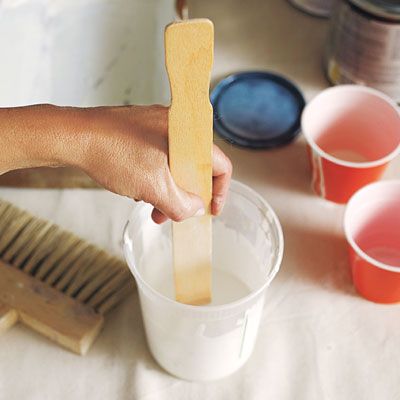
Once the base coat is dry, use disposable cups to mix equal parts glaze and the first color in satin latex. Stir and pour into a paint tray. Beginning at the top corner of the upper wall, cut in and roll the glaze from the ceiling down to the chair rail. To keep the glaze from drying before you drag it, don’t go wider than 3 feet.
Step 2: Drag the Glaze Vertically
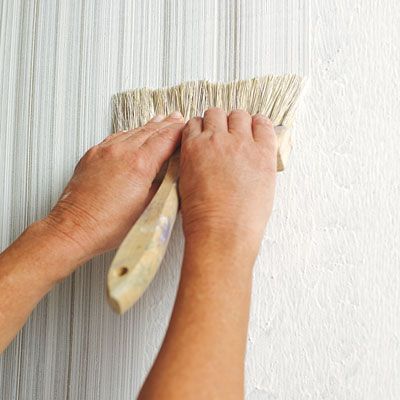
Press your brush into the wet layer at the top corner and pull down. The bristles should cut grooves through the glaze to expose the base color. Continue in one uninterrupted stroke to the chair rail. In the next section, slightly overlap the first dragged area to avoid a visible seam.
Tip: Hang plumb bobs—you can make your own by tying washers to household twine—just off the wall for a visual guide as you apply the vertical strokes.
Step 3: Wipe off Excess Glaze

Use a clean rag or paper towel to wipe excess glaze off the brush. This step will help provide a consistent texture throughout the dragged area.
Step 4: Roll and Drag Vertically
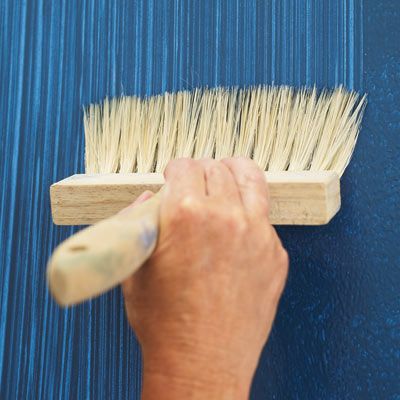
Mix the glaze with the second color when the wainscot base color is dry, as in Step 1. Starting at the top left corner, cut in and roll on a band of glaze between the chair rail and baseboard. Drag the wet glaze, pulling steadily from top to bottom without stopping. Roll the next patch, overlapping the first by several inches. Repeat.
Step 5: Roll and Drag Horizontally
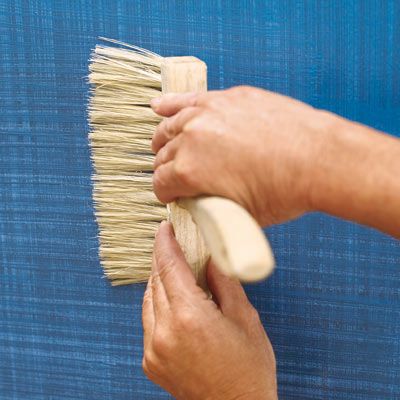
With the first dragged layer completely dry—a day should do it—mix glaze with the third color. Roll it on in a manageable strip, running left to right beneath the chair rail. Be sure to get paint between the grooves of your first layer with the roller. Now, drag the full width of the wall. Roll on the next strip and repeat to the baseboard.
Finishing Touches
After completing the dragging process, allow the walls to dry completely. This may take as long as 48 hours, depending on the humidity and temperature of your space. Once dry, inspect the walls for any areas that may need touch-ups or additional dragging to achieve a consistent look.
Add a clear topcoat to protect your faux fabric finish and make cleaning easier if desired. Choose a water-based polyurethane in a finish that complements your desired look—matte for a more natural fabric appearance or satin for a slight sheen. Applying the topcoat involves using a clean, high-quality brush or roller to help it go on smoothly without streaks.
Faux Fabric Paint Maintenance and Care
To maintain your faux fabric-painted walls, dust them regularly with a soft, dry cloth or use a vacuum with a brush attachment. For spot cleaning, use a damp cloth with mild soap and water, and be careful not to scrub too hard and potentially damage the finish. Avoid harsh chemicals or abrasive cleaners, which can strip away the glaze and ruin the faux fabric effect.
